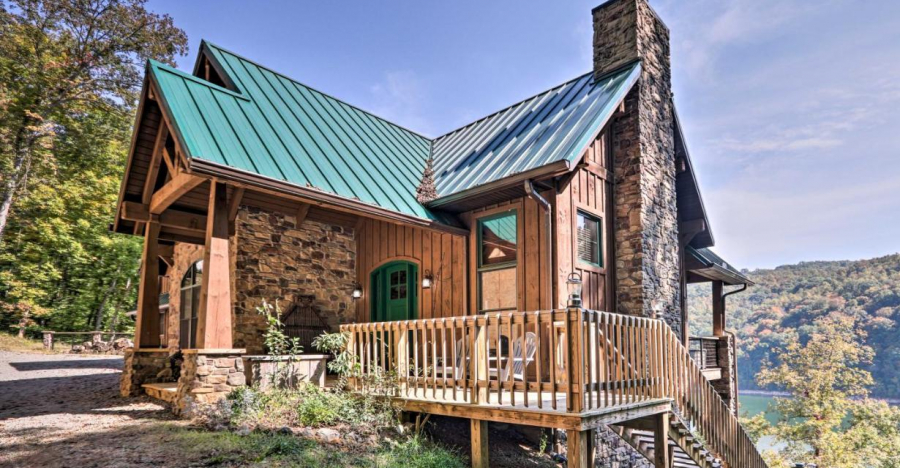Take a look inside this expansive Norris Lake Cabin with decks and a dock. The Norris Lake Cabin is situated in New Tazewell, the cabin has free WiFi at guests’ disposal throughout the vacation property. The spacious holiday home has a balcony and lake views with 4 bedrooms, 2 living rooms, a flat-screen TV, an equipped kitchen with a dishwasher and an oven, and 5 bathrooms with a hot tub. Towels and bed linen are offered in the holiday home. The vacation property has an outdoor dining area.

Timber-frame cabins are just one of the designs you might choose when building a home. Traditional timber framing is the method of creating structures using heavy squared-off and carefully fitted and joined timbers with joints secured by large wooden pegs (larger versions of the mortise and tenon joints in furniture). It is commonplace in wooden buildings found from the 19th century and earlier. The building method comes from making things out of wood without the use of modern high-tech saws to cut lumber from the starting building material stock.
Wood cabin buildings are stronger and more durable. Experience has shown that living in houses that are built largely of wood offers people several health benefits. Wood also has a positive psychological effect. One benefit of timber-framed cabin building is that an average-sized timber-frame cabin can be built within 2 to 3 days. The cabins lend well to pre-fitting the frame usually in bent or wall-sections that are aligned with jigs. Timber Frames with SIP also known as structural insulated panels as insulation, are more efficient than fiberglass, and even stronger. There are a limited number of load-bearing walls in a timber frame cabin building which allows for more flexibility and changes to the cabin floor plan. The generally larger spaces between the frames enable greater flexibility in placing and re-locating windows and doors during and after construction, with less concern over structural implications and the need for heavy lintels.
When using SIPs, cabin buildings can often cost less than half as much to heat and cool as stick-built/fiberglass construction. With SIPs, HVAC systems can be sized smaller, costing less, and still have higher efficiency. When building a timber frame design usually less wood is used in the construction than in a stud-wall structure. The use of sustainable building materials, such as local wood, contributes to a lower carbon footprint and lower cost to the environment. A very low carbon footprint is created when local woods are used in cabin building construction. The building process creates almost no waste. Compare this with the dumpsters that you see at stick-built building sites. When there is less waste at the job site means that there is less pressure on waste treatment plants/landfills. Timber waste can be recycled so that is better for the environment. It can use recycled or otherwise discarded timbers. Craftsmanship is encouraged and enhanced by the owner’s and framer’s knowledge that the frame will be seen and admired by the inhabitants and visitors for centuries.

















